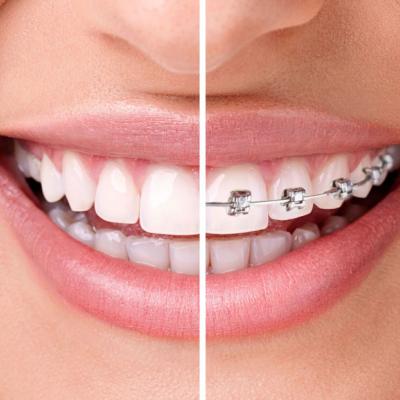Orthodontics
About specialty
Diagnosis, prevention, and correction of misaligned teeth
What does an orthodontist do
An orthodontist is a dentist trained to diagnose, prevent, and treat teeth and jaw irregularities. They correct existing conditions and are trained to identify problems that may develop in the future. Orthodontists work with people of all ages, from children to adults.
Misalignment, or malocclusion, is the most common reason people see an orthodontist. It's hereditary and is the result of size differences between the upper and lower jaw, or between the jaw and the teeth. Malocclusion leads to tooth overcrowding, a misshapen jaw, or irregular bite patterns.
Main focus of orthodontic treatment
Orthodontists use fixed and removable dental devices, like braces, retainers, and bands, to change the position of teeth in the mouth. They treat dental abnormalities, including:
- crooked teeth
- bite problems, like an overbite or an underbite
- crowded teeth, or teeth that are too far apart
- jaw misalignment
The goal of orthodontic care is to improve a patient's bite. Teeth that are straight and evenly spaced will align with opposing teeth in the jaw. A healthy bite ensures you can eat, chew, and speak properly. In the past, seeing an orthodontist was associated with children or teenagers who needed braces. However, orthodontists can correct dental problems at any age.
What can you achieve
• maintain healthy teeth, periodontium and temporomandibular joints
• improve the aesthetics of the face
• get straight teeth and a beautiful smile
• improve the bite
• protect against periodontal disease
• eliminate teeth overcrowding
• eliminate some speech impediments
• cure periodontitis
Orthodontic treatment can also be a step before putting in a denture or implants (by an oral surgeon).
Examination
For diagnostic purposes, orthodontist uses available tests that allow to assess the patient's bite. After a conversation with the patient, they perform an extraoral and intraoral examination, and take photographs and x-rays.
Treatment
Orthodontic treatment consists of several stages. During the first visit, the orthodontist performs a basic check-up, checks whether the teeth are healthy and free of tartar. Then they order additional examinations, X-rays and dental impressions. Based on the results of diagnostic tests, they will be able to plan the treatment and its cost. The next step is to choose and put on orthodontic braces. Braces are still the most effective method of orthodontic treatment. They differ in technology, method of attachment and duration of treatment, so it is an important decision that affects the final result. During this visit, orthodontist instructs the patient on how to use the braces, and also provides information on the recommended diet and the need to maintain oral hygiene. The next visits are to control the treatment by adjusting the braces and possible perform an X-ray.

